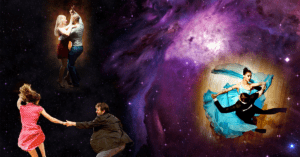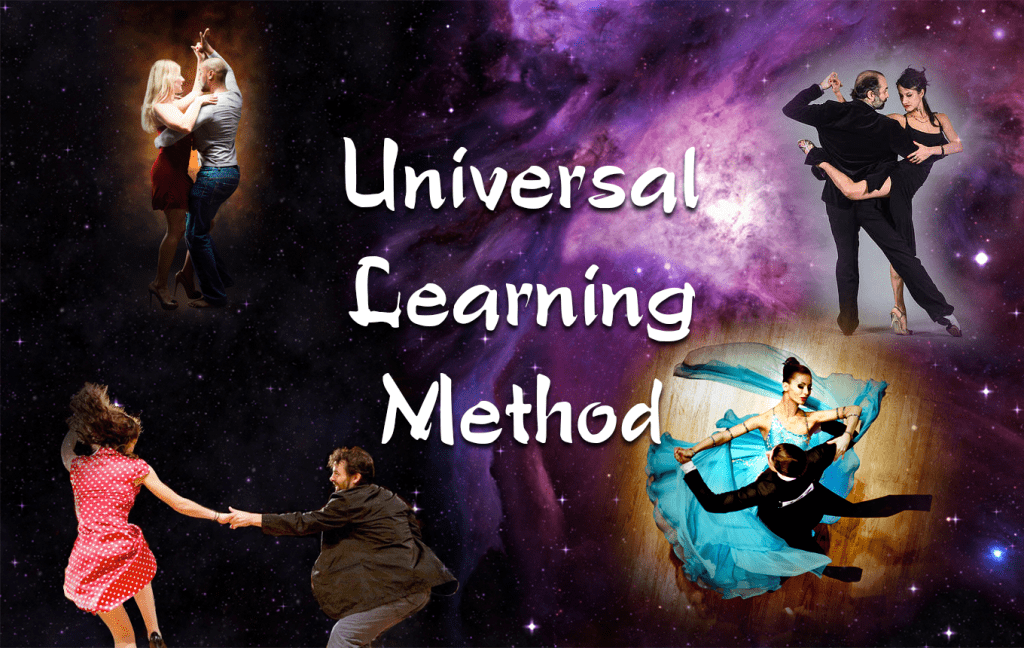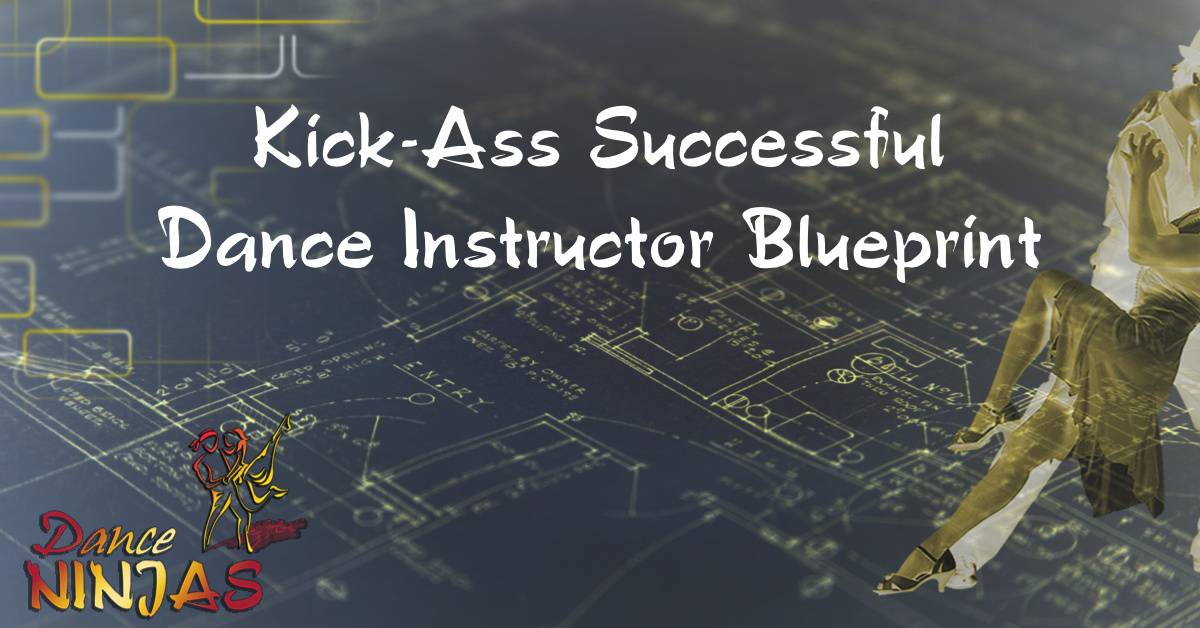This is Part 1 of a 4-part series on redeveloping techniques so they work with everyone you dance with:
- Part 1 – [You Are Here] –Why A Universal Learning Method Is So Valuable For Your Dancing
- Part 2 – How To Turn Any Technique Into Your Own Universal Technique
- Part 3 – STOP Dancing On The Beat…
- Part 4 – Give Yourself The Advantage
Have you ever learned a dance technique that might improve your dancing with those who do the same technique but doesn’t seem to work with people who don’t use that technique?
Isn’t it frustrating to learn a cool concept and then not be able to use it with 50% (or more) of the people you dance with?
Well, now you can change that and make every technique and concept work universally (aka: with everyone you dance with).
What I’m about to share with you is the exact same method that’s used to create all of the techniques taught in our online dance trainings and all the classes I teach to thousands of dancers in over 200 cities across 30+ countries.
As a dancer, you can use this method to create your own techniques that work with everyone you dance with.
And as you’ll see below, there are quite a few more benefits you’ll get from using a Universal Learning Method.
Here’s my disclaimer: I obviously can’t promise that you will get the same results as I do when you create your own universal techniques. Your results will vary due to a variety of factors.
That said, by using the structure of the Universal Learning Method I’m about to share with you in these posts, you will be way ahead of me when I started my journey to create techniques that work universally.
How Our Universal Learning Method Was Created
Over the past 15 years, I have taken thousands of dance classes and as much as I love taking all sorts of dance classes and they definitely improved my dancing, I always wanted to find a way to use the techniques I was learning so they worked with everyone, and a lot of the time they were not presented in this way.
For example, when I learned about counterbalance, I was taught that I was supposed to lead it and my follow was supposed to follow it (often at very specific moments) but some of my partners wouldn’t follow it when I wanted them to and others would automatically go into it when I never asked them to.
I found this really frustrating and started getting annoyed when I danced with the follows who didn’t follow my counterbalance or always went into counterbalance without me leading it.
As I learned more awesome techniques, I also found it frustrating to dance with partners who ignored certain aspects of the music, or who didn’t dance grounded, or who didn’t bounce (or pulse) the way I learned to.
The more I danced with these people, the more annoying it got and eventually I started to avoid dancing with them (even though I used to enjoy dancing with some of them before I learned these techniques).
That’s crazy!
First off, I don’t want to have to avoid dancing with certain people. It takes too much of my energy and it doesn’t exactly help create a great atmosphere or make me (or them) feel great. I’d rather just find a way to have awesome dances with them (and yes, I did and I will show you how below).
Secondly, I was actually losing my enjoyment to dance with certain people as I was supposedly improving my dancing! I don’t know about you, but I want my enjoyment for dance to increase as I improve my dancing.
I figured there had to be a way to learn techniques that would increase my skills and at the same time increase my enjoyment with everyone I encountered…
…and that is exactly why I started to search for a Universal Learning Method…
…so I could take techniques that I was learning and redevelop them so they improve my dancing with everyone, instead of just the people who know that technique.
And that is exactly what I want to share with you here…
Dance Ninjas Universal Learning Method
So let’s take the example of learning counterbalance and see how using the Universal Learning Method turned this cool concept into something I could use with everyone instead of just those that followed me perfectly (even when I probably wasn’t leading perfectly).
Want To Take The Fast Track?Everything we teach in our Core Lessons uses the Universal Learning Method. So if you want to take the fast track and get a bunch of techniques that have already been redeveloped to work universally, you will definitely want to check out our dance training. |
Example: Counterbalance
Instead of learning that I was “supposed” to lead the counterbalance and my follow was supposed to follow it…
…I decided to learn that counterbalance was an awesome part of dancing that I could both lead and follow (regardless of whether or not I was the official lead or follow). That way, if my partner didn’t have the knowledge, skill level, or desire to follow my counterbalance, it was no big deal because I would just separate that aspect out and follow their counterbalance while I was leading everything else.
Of course, to be able to do this, I had to learn to do any movement with or without counterbalance, and with varying degrees of counterbalance, different directions of counterbalance, and go in and out of counterbalance at any point during any move.
It created a totally different way of looking at counterbalance that I am constantly still improving and learning more about every day I dance. Now, when I dance with people who don’t use counterbalance in one of the ways I was taught, instead of getting frustrated and having a mediocre dance, I get to learn more and improve my dance skills while I’m social dancing.
Do you see how different this is than the normal method of learning counterbalance?
Let’s put them side by side so you can see the exact difference in how you would practice or learn with each method:
| Normal Learning Method | Universal Learning Method | |
| How You Learn Counterbalance | You learn a specific movement that either has counterbalance, doesn’t have counterbalance, or has counterbalance at a very specific moment(s). | You learn how to go in and out of counterbalance with different positions, speeds, directions, lengths of time, etc and then practice adjusting your counterbalance to each partner at any moment of every move. |
One upside of the Normal Learning Method above is that you can create a very specific look or style of dance with people who also know that style (or have a Universal Learning Method).
One downside of the Normal Learning Method is that you are extremely likely to come across many social dancers who don’t dance that movement the exact same way and it can make the dance feel less than amazing (and sometimes downright “horrible”) if neither one of you knows how to adjust for the other person.
Of course, the more classes you take from different instructors with different styles, the more you will learn about the different ways to use counterbalance but this could take many years to gain the knowledge you can get in one hour by using the Universal Learning Method…
So give yourself a head start on your learning and start turning every technique into a universal technique or take the fast track and join Dance Ninjas…
Why A Universal Learning Method Is So Valuable For Your Dancing
The most clear and simple benefits of using a Universal Learning Method are:
- You no longer need your partner to know a specific technique or react a specific way for your dances to be awesome.
- You are learning to react to the music and the partner instead of habitually doing movements at specific moments because that is the way you trained them into your body.
- Every dance can be it’s own dance. Each partner and each song changes how you move and creates the dance for you. Even dancing the same song with the exact same moves will be totally different depending on your partner.
- You are creating habits of creation and reaction instead of habits of stylistic movement.
There are a couple additional benefits of using a Universal Learning Method that might not be immediately obvious.
- By creating a habit of adjusting to each partner and song, you will teach yourself to learn new stuff and adjust on the fly as you social dance, sometimes learning new styles and concepts without even taking a class. Of course, we still recommend taking regular classes too as they will also teach you plenty of different concepts that are great for your dancing!
- You can create your own style(s) just by changing one small aspect of your movement (like the direction of your counterbalance).
- You are learning how to dance instead of learning a dance. Our d’ancestors didn’t do a dance, they danced!
There are a lot of lessons out there teaching you how to improve your dancing in 1 specific style of dance. Dance Ninjas Dance Training shows you how to improve your dancing universally in every style of dance.
So how do we improve your dancing universally?
To learn how we improve your dancing universally (and how you can also do this for yourself), go on to Part 2 – How To Turn Any Technique Into Your Own Universal Technique.




Want an example of another concept redeveloped to be universal?
Here is one that has to do with improving your musicality:
Concept = AABA Phrasing
I was taught a really great concept on how to predict music for Lindy Hop. It was called AABA Phrasing and is a very normal structure that musicians use in a lot of Lindy Hop music.
The idea is that each letter (A-A-B-A) represents a phrase of the music. So in a song using this structure (after the introduction), it will start with a phrase (usually 32 beats of music) that we will call “A”, then it will repeat that exact same phrase “A” again, then it will play a completely different phrase “B”, and finally it will play the original phrase “A” one last time. Then it repeats the structure but often with a new set of phrases “C-C-D-C”.
The aspect that I found valuable about this technique was that I could now predict certain aspects of the music when a song followed the AABA Phrasing structure. So sometimes I could tell what was going to happen next in the music without having to know the song.
That is really awesome and I am so thankful for having learned this! At the same time, there were some downsides to this concept.
The downsides of this concept were:
1. It only worked for songs that followed the AABA structure and even in those songs, it usually didn’t work for the entire song because there were intros, bridges, solos, and other various aspects of the song that were not within the AABA structure.
2. It usually didn’t work for other styles of music like Blues, Tango, Salsa, etc. So as I trained the AABA structure into my dancing, I was actually training a habit that would make dancing to other styles of music more difficult.
3. There are A LOT of songs within Lindy Hop that do not use that AABA structure and so I was training a habit that would make dancing to those other Lindy Hop songs more difficult (as well as many other styles of music).
So…
How can we redevelop this concept into something that works universally and improves our dancing to all music?
How do we get the benefits of predicting music that this concept offers without the downsides that it brings with it?
I will show you what I did sometime next week but before I do…
Try to create your own universal version of this concept and share it below.
I really like it as is!
Two ideas come to mind.
1. This one takes preparation. Listen to LOTS of music, especially in the genre you prefer/expect to dance to. Even without consciously seeking it, this will start to wire your brain to recognize, and then to expect the changes and the patterns.
2. With a relaxed awareness of the music, and an attitude of being alert to opportunities to move against it, or at least to recognize those happy coincidences that arise, then we can more easily be aware of, “Oh, yeah, this is a variant of what we’ve just danced to,” and respond to that new phrase.
Thanks for your great ideas for dancing based on process instead of learned/taught “goals”.